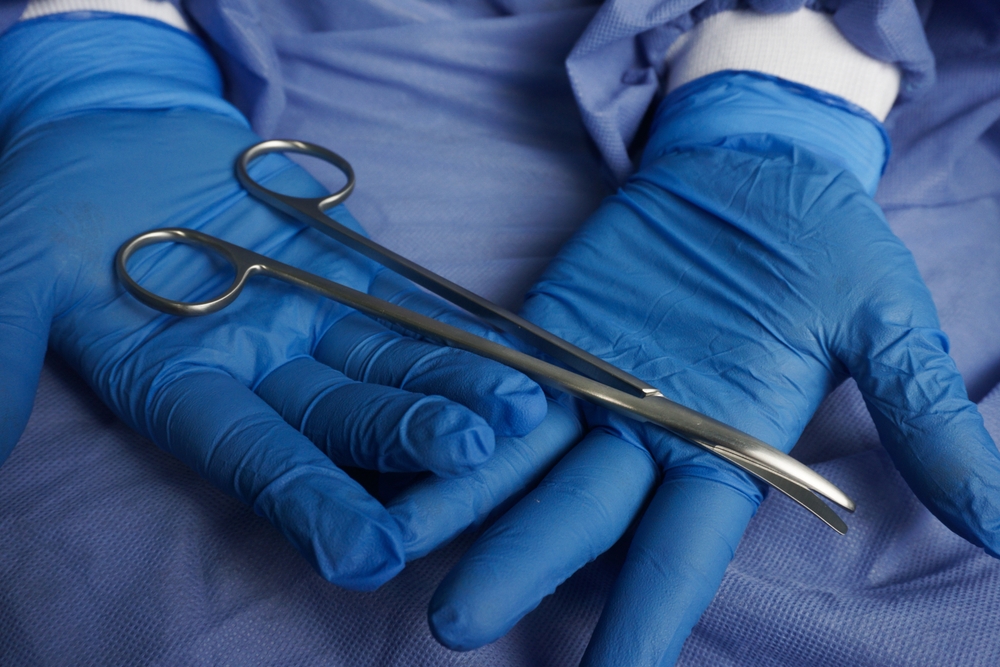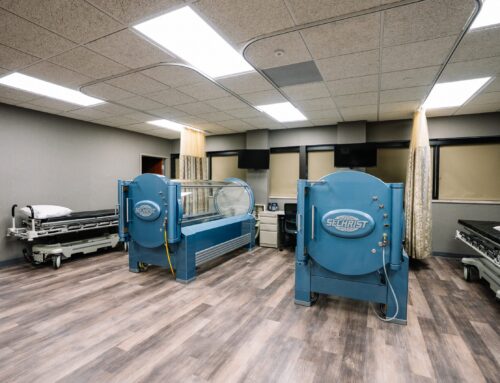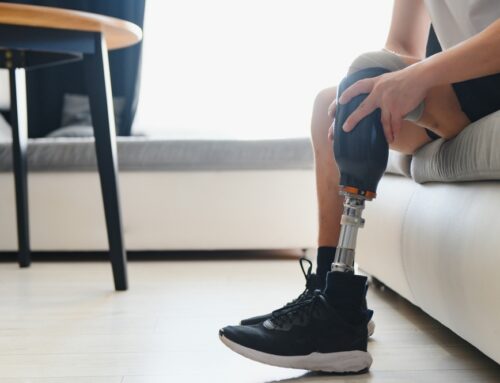Wound debridement is a type of wound care that involves the removal of dead, damaged, or infected tissue from a wound to promote healing. It is a critical step in managing chronic wounds and preventing complications. The following sections lay out what wound debridement entails, how it works, what you can do to prepare for it, and what to expect during the procedure.
What is Wound Debridement?
Wound debridement is the process of cleaning a wound by removing non-viable tissue, which includes but is not limited to dead skin, foreign material, and contaminants. This procedure is crucial for:
- Reducing the risk of infection.
- Promoting the growth of healthy tissue.
- Improving the effectiveness of topical treatments.
- Enhancing the wound’s ability to heal.
Pressure ulcers, diabetic foot ulcers, leg ulcers and other traumatic injuries are examples of types of wounds that require debridement.

How It Works
Wound debridement can be performed using several methods, each suited to different types and severities of wounds. The main methods include:
- Surgical Debridement: Surgical debridement involves the use of surgical instruments to remove dead tissue from a wound. This procedure can be performed under local or general anesthesia, depending on the severity and location of the wound. It is often used when there is a significant amount of necrotic tissue, or if the wound is large or infected. The goal is to clean the wound thoroughly to promote healing and reduce the risk of infection. Surgical debridement can be repeated if necessary, and it is often followed by other wound care treatments.
- Mechanical Debridement: Mechanical debridement uses a saline solution and a gauze or sponge to physically scrub away dead tissue from a wound. While effective, this method can be quite painful and may inadvertently damage healthy tissue along with the necrotic tissue. It is often used for wounds with a substantial amount of dead tissue and is typically performed by healthcare professionals. Pain management is a consideration during this procedure due to the discomfort it can cause. Mechanical debridement is generally not recommended for sensitive or fragile skin.
- Autolytic Debridement: Autolytic debridement leverages the body’s natural enzymes and moisture to break down dead tissue. Special dressings, such as hydrocolloid or transparent film dressings, are applied to the wound to keep it moist and facilitate the body’s natural healing processes. This method is less painful compared to mechanical debridement and is often used for smaller, less severe wounds. The dressing is left in place for several days, during which time the body’s enzymes work to liquefy and remove the dead tissue. This technique is suitable for patients who can tolerate longer healing times and require minimal intervention.
- Enzymatic Debridement: Enzymatic debridement involves applying topical enzymatic agents to the wound, which work to dissolve dead tissue. This method is less invasive than surgical or mechanical debridement and can be used alongside other debridement techniques. Enzymatic agents, such as collagenase, selectively target and break down necrotic tissue without harming healthy tissue. This approach is particularly useful for patients who may not tolerate surgical debridement or those with wounds that have a mix of necrotic and healthy tissue. Regular application of the enzymatic agent and dressing changes are required.
5. Biological Debridement: Also known as maggot therapy, biological debridement uses sterile maggots to consume dead tissue and release enzymes that further break down necrotic material. This method is particularly effective for infected wounds and those with extensive dead tissue. The maggots are contained within a special dressing and left in place for several days. They selectively eat only the dead tissue, sparing healthy tissue. Biological debridement is recognized for its precision and ability to promote wound healing and reduce bacterial load. Despite its unconventional nature, it is a valuable option in wound care management. *Although this is a known method for wound debridement, this is not something we offer at IWC.
How to Prepare for Wound Debridement
Preparation for wound debridement depends on the method being used and the individual patient’s condition. These are the general steps that are followed:
- Consultation: A meeting will be held with your healthcare provider to discuss your medical history, current medications, and any allergies. Your provider will explain the procedure along with the benefits, and risks.
- Medication Adjustments: Your doctor may also advise you to stop certain medications, such as blood thinners, a few days before the procedure to reduce the risk of bleeding.
- Fasting: If you are required to go under general anesthesia, you might need to fast for several hours before the procedure.
- Transportation: It is important to arrange for someone to drive you home, especially if sedation or anesthesia is being used.
- Wound Care Supplies: Make sure you have the necessary supplies at home for post-procedure wound care. These can include dressings, saline solution, and prescribed medications.
What to Expect During the Procedure
Your experience during wound debridement will vary based on the method used:
- Surgical Debridement:
- Anesthesia: Local anesthesia numbs the wound area or general anesthesia puts you to sleep.
- Procedure: The surgeon uses scalpels, scissors, or other instruments to cut away dead tissue.
- Duration: Procedures can take 15 minutes to several hours, depending on the wound’s size and complexity.
- Mechanical Debridement:
- Cleaning: The wound is cleaned with saline solution.
- Debridement: A piece of gauze or a sponge is used to scrub away dead tissue.
- Pain Management: Pain relief medication may be given before starting to help with discomfort.
- Autolytic and Enzymatic Debridement:
- Application: Special dressings or enzymatic agents are applied to the wound to clean it.
- Duration: The process is slower, taking several days to weeks, and requires regular dressing changes.
- Biological Debridement:
- Application: Sterile maggots are placed on the wound and covered with a dressing.
- Duration: The maggots are typically left on the wound for 24 to 48 hours and then removed.

What to Expect After the Procedure
Proper wound care is crucial after wound debridement to ensure healing and prevent complications:
- Pain Management: You may experience pain or discomfort, which can be managed with prescribed pain relievers.
- Dressing Changes: Follow your healthcare provider’s instructions for changing dressings and keeping the wound clean.
- Monitoring: Watch for signs of infection, such as increased redness, swelling, or pus.
- Follow-up Appointments: Attend scheduled follow-up visits to monitor the wound’s progress and receive further treatment if necessary.
- Activity Restrictions: Depending on the wound’s location and severity, you may need to limit certain activities to avoid putting stress on the wound.
- Hydration and Nutrition: Maintain a healthy diet and stay hydrated to support the healing process.
Our center unites specialists from various medical fields, including wound care, vascular care, and infectious disease management. This collaborative approach ensures that we deliver holistic and advanced treatments to meet your unique needs, no matter the complexity of your condition. Call Innovative Wound Care today at (810) 600-2030 to make your appointment today!
People Also Ask
Is wound debridement painful?
The level of pain depends on the method used and the wound’s condition. Surgical debridement usually involves anesthesia to minimize pain, while mechanical debridement can be uncomfortable. Pain management strategies are available for all methods.
How long does it take for a wound to heal after debridement?
Healing time varies based on the wound’s size, depth, and location, as well as the patient’s overall health. Some wounds may take weeks to months to heal completely.
Can wound debridement be done at home?
Certain types of debridement, such as autolytic and enzymatic, can be managed at home under the guidance of a healthcare provider. However, surgical and mechanical debridement should be performed by medical professionals.
Why is debridement necessary for wound healing?
Debridement removes dead and infected tissue, which can hinder the healing process. It also reduces the risk of infection and prepares the wound bed for effective healing.
Wound debridement is a vital procedure for promoting the healing of chronic and complex wounds. By understanding what to expect and following proper preparation and aftercare guidelines, patients can improve their chances of a successful recovery and return to a healthier state. Always consult with healthcare professionals to determine the best approach for your specific wound care needs.





